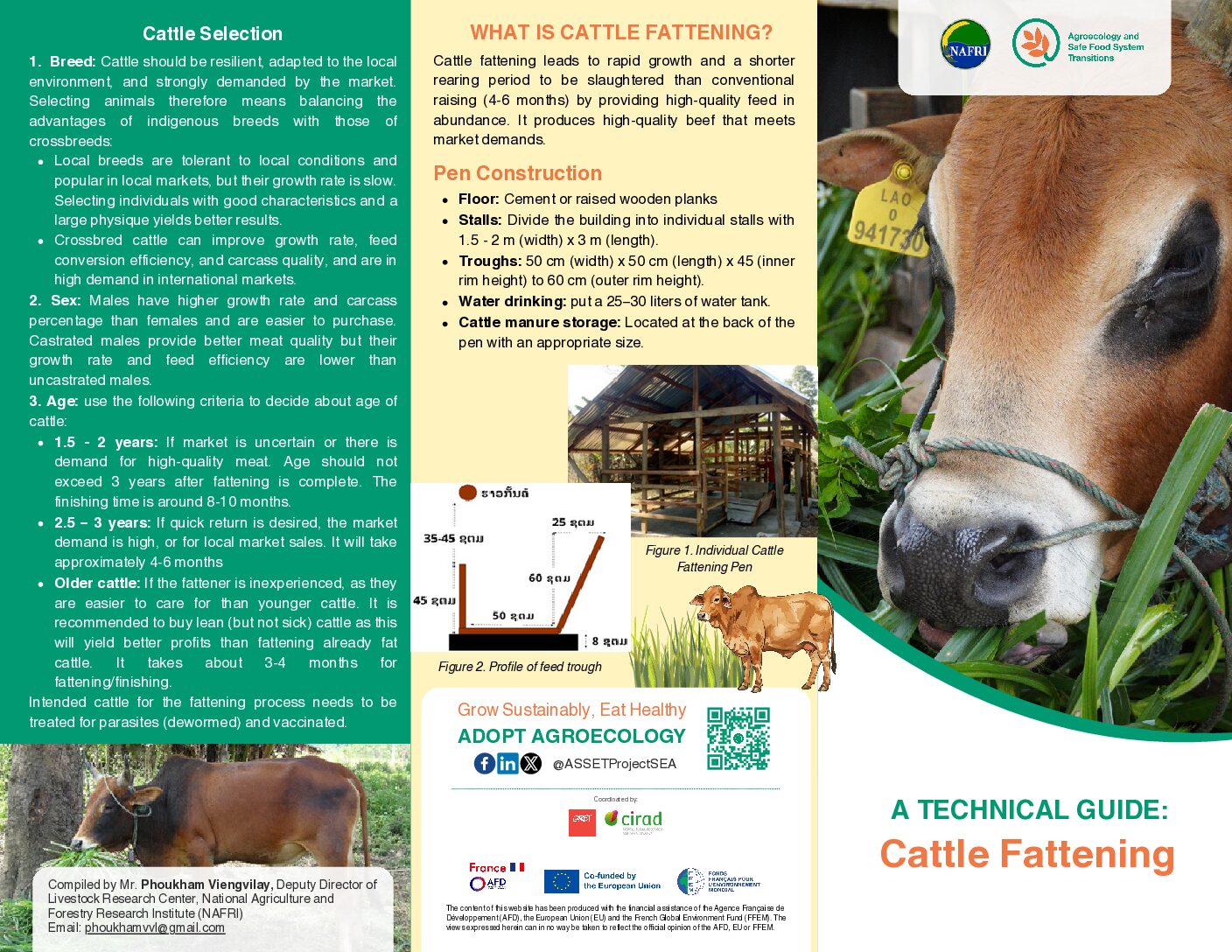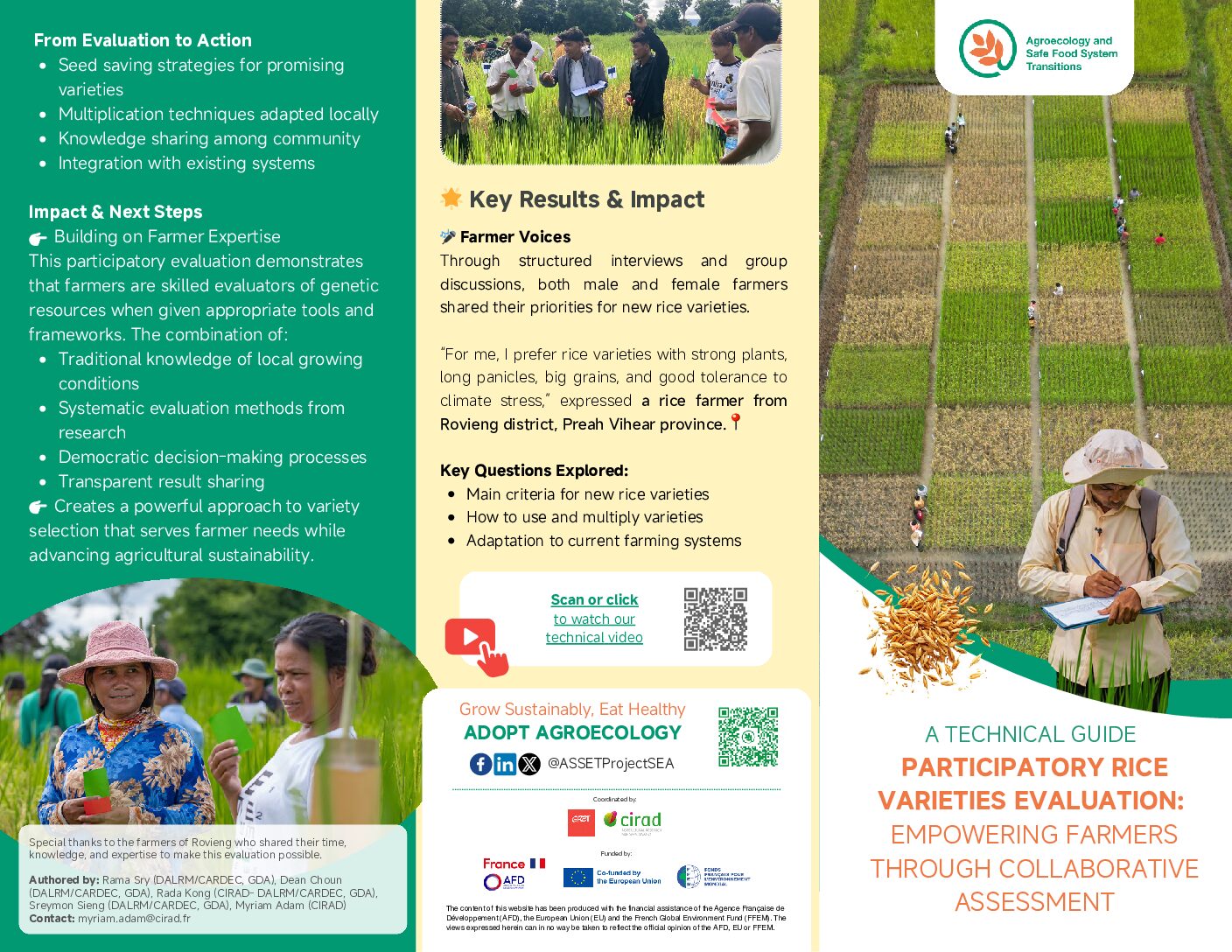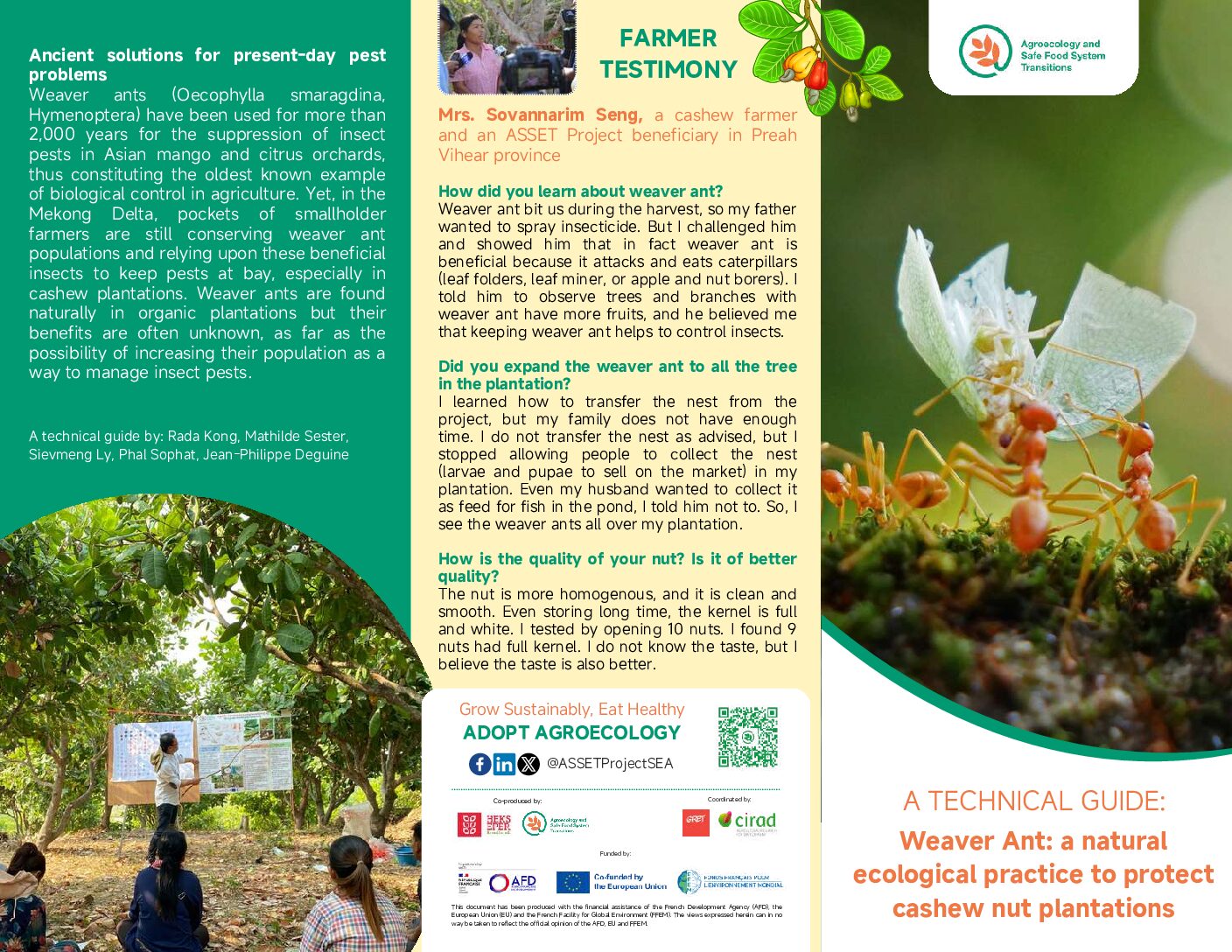
Weaver ant, a natural ecological practice to protect cashew nut plantations
Weaver ants (Oecophylla smaragdina, Hymenoptera) have been used for more than 2,000 years for the suppression of insect pests in Asian mango and citrus orchards, thus constituting the oldest known example of biological control in agriculture. Yet, in the Mekong Delta, pockets of smallholder farmers are still conserving weaver ant populations and relying upon these beneficial insects to keep pests at bay, especially in cashew plantations. Weaver ants are found naturally in organic plantations but their benefits are often unknown, as far as the possibility of increasing their population as a way to manage insect pests.
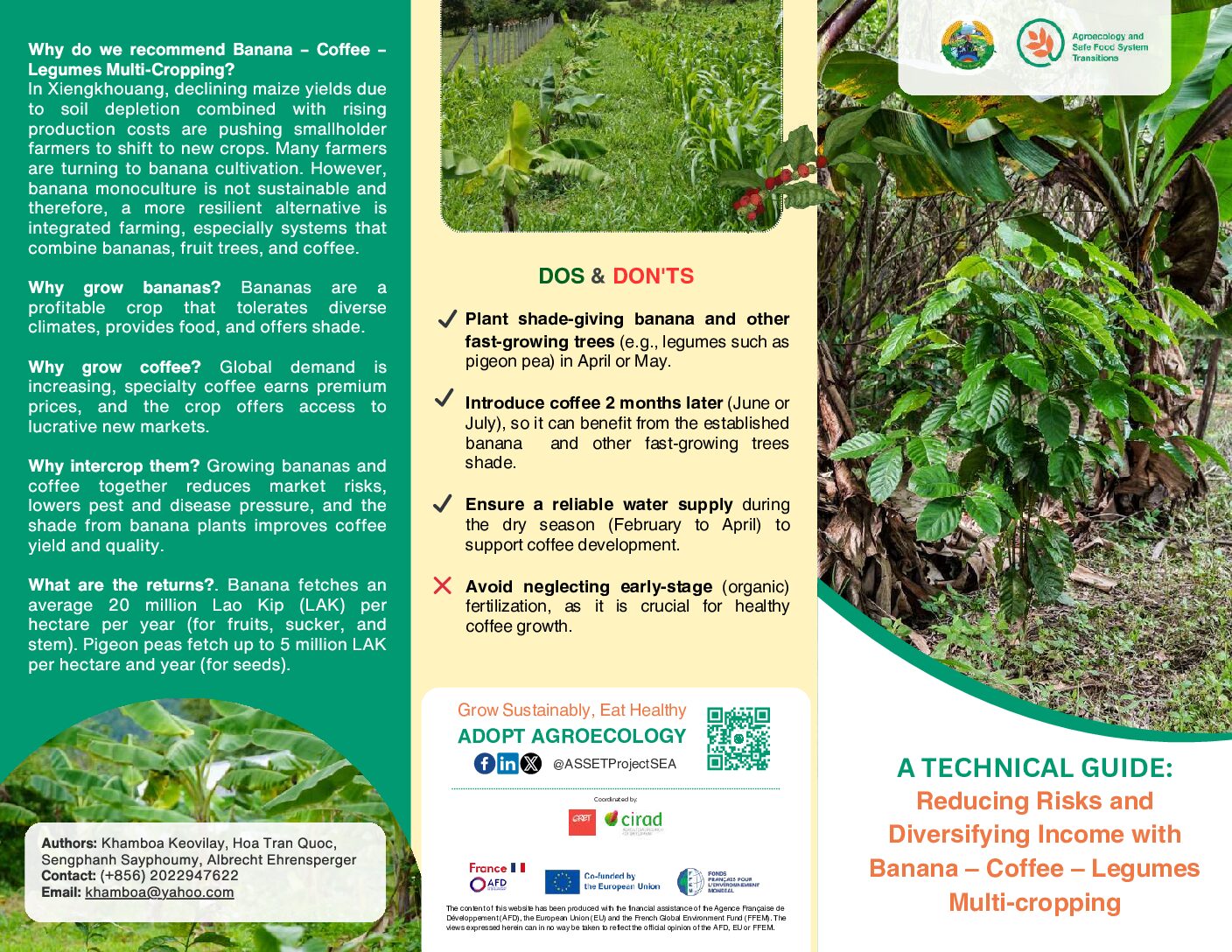
Reducing Risks and Diversifying Income with Banana – Coffee – Legumes Multi-cropping
In Xiengkhouang, declining maize yields due to soil depletion combined with rising production costs are pushing smallholder farmers to shift to new crops. Many farmers are turning to banana cultivation. However, banana monoculture is not sustainable and therefore, a more resilient alternative is integrated farming, especially systems that combine bananas, fruit trees, and coffee.
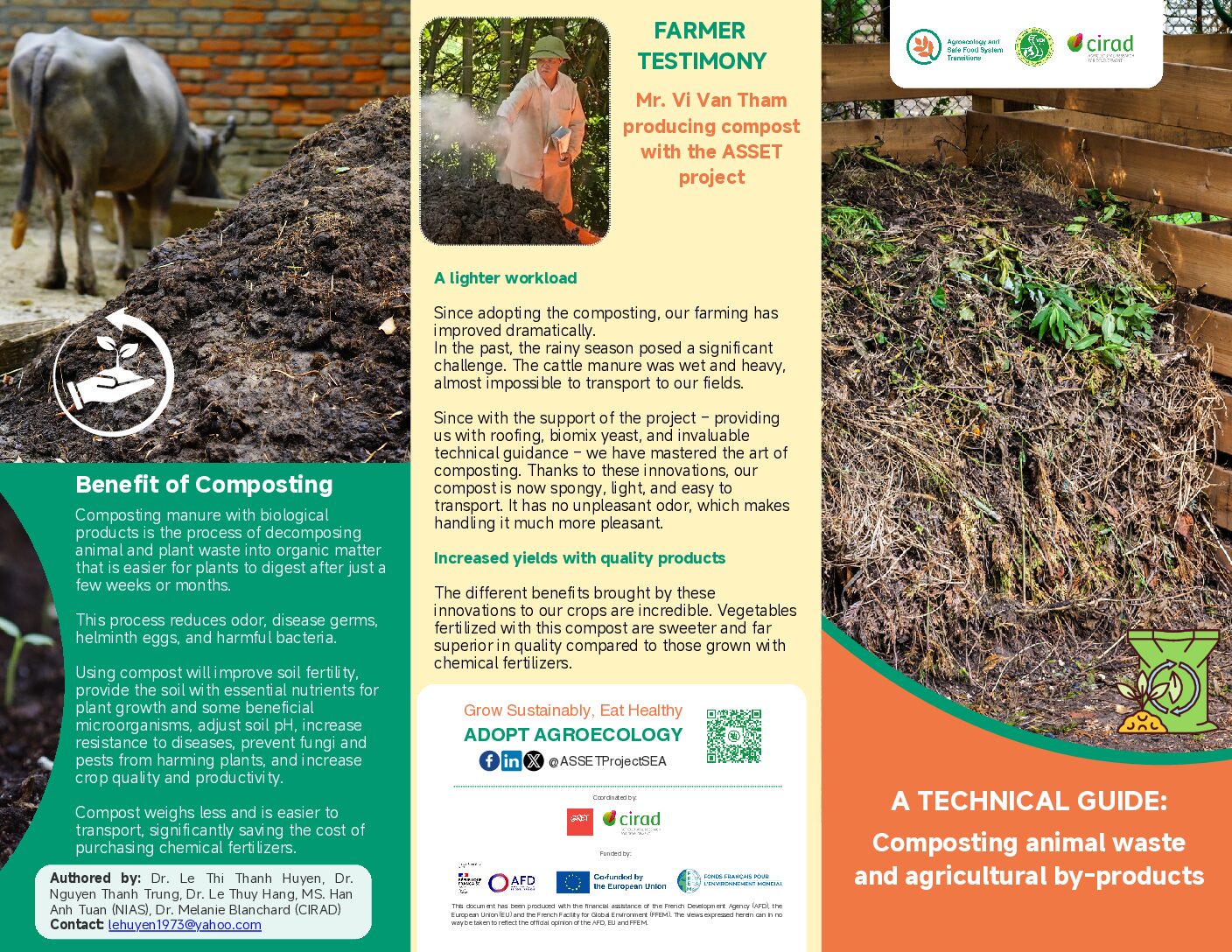
Ủ phân hữu cơ từ chất thải chăn nuôi và phụ phẩm nông nghiệp
Hướng dẫn kỹ thuật: Ủ phân hữu cơ từ chất thải chăn nuôi và phụ phẩm nông nghiệp. Ủ phân bằng chế phẩm sinh học là quá trình phân hủy các chất thải động vật, thực vật thành chất hữu cơ dễ tiêu hóa hơn cho cây trồng chỉ sau vài tuần hay vài tháng. Ủ phân hữu cơ giúp giảm mùi hôi, tiêu diệt hạt cỏ dại và tiêu diệt một số mầm bệnh, trứng giun sán và vi khuẩn có hại.
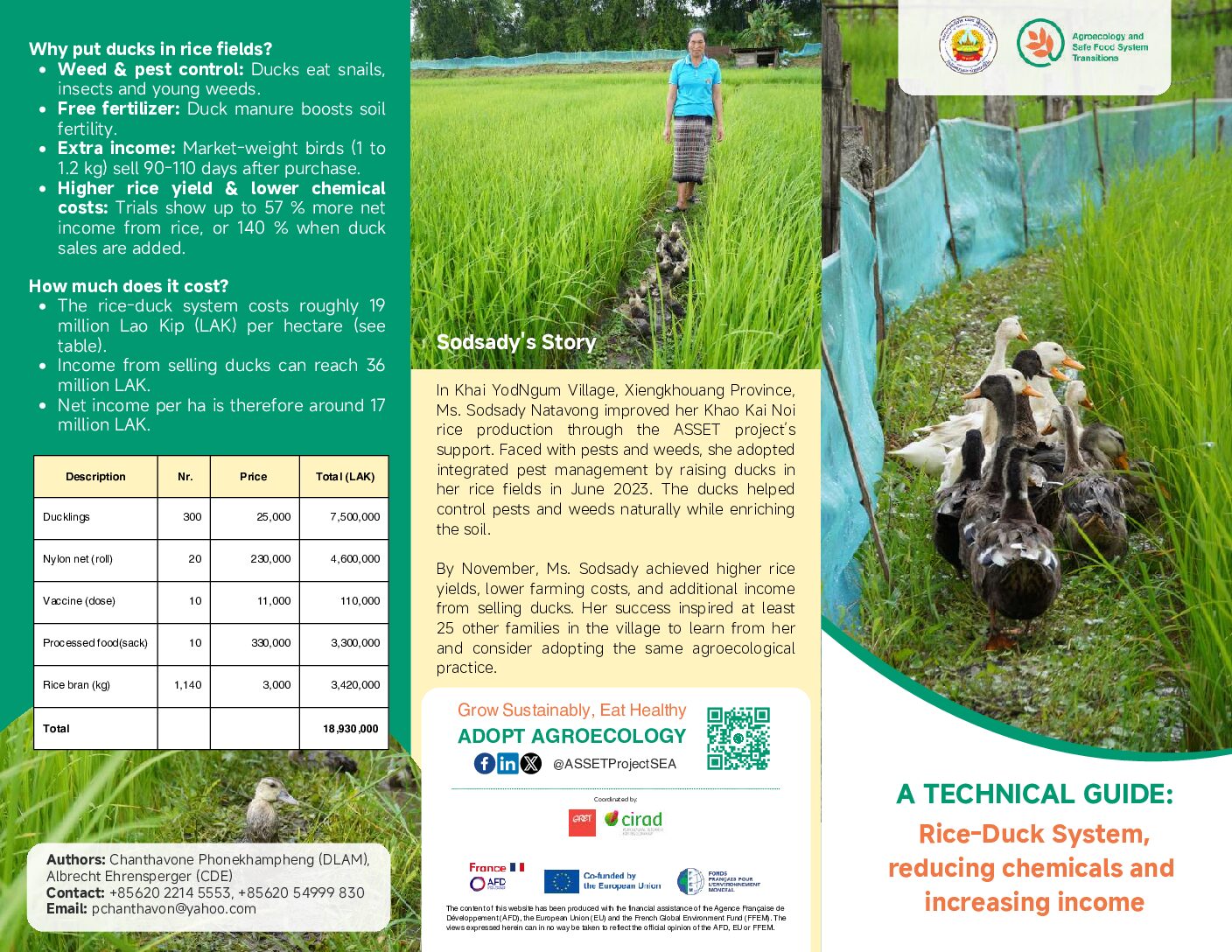
A Technical Guide : Rice-Duck System, reducing chemicals and increasing income
The technical leaflet introduces the rice–duck system, an agroecological practice that reduces chemical use by allowing ducks to control pests and weeds while naturally fertilizing the soil. It outlines the system’s economic benefits, showing how farmers can increase rice yields and earn additional income from duck sales. The leaflet also provides practical guidance, timelines, and cost estimates to support successful adoption.
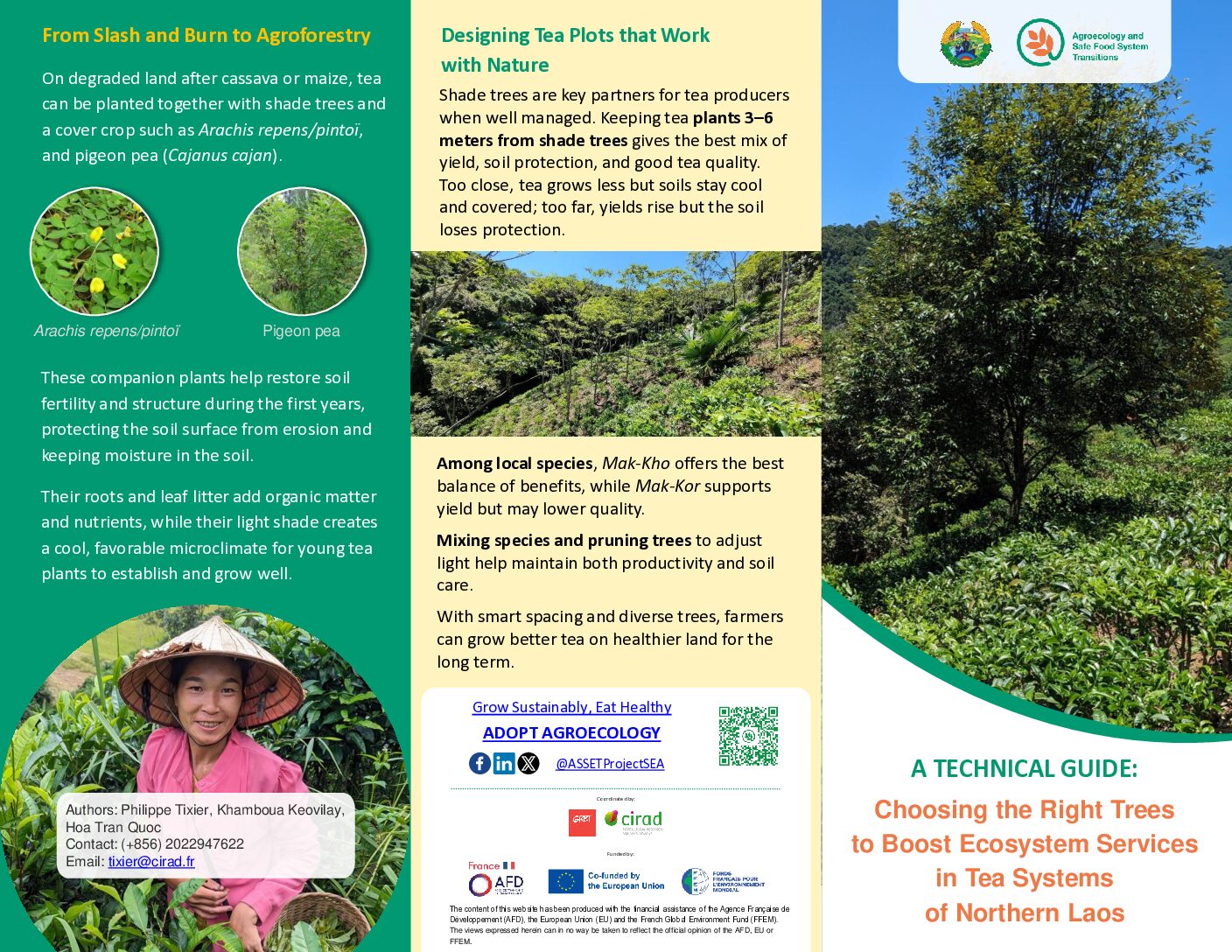
A Technical Guide : Choosing the Right Trees to Boost Ecosystem Services in Tea Systems of Northern Laos
Shade trees are key partners for tea producers when well managed. Keeping tea plants 3–6 meters from shade trees gives the best mix of yield, soil protection, and good tea quality. Too close, tea grows less but soils stay cool and covered; too far, yields rise but the soil loses protection.
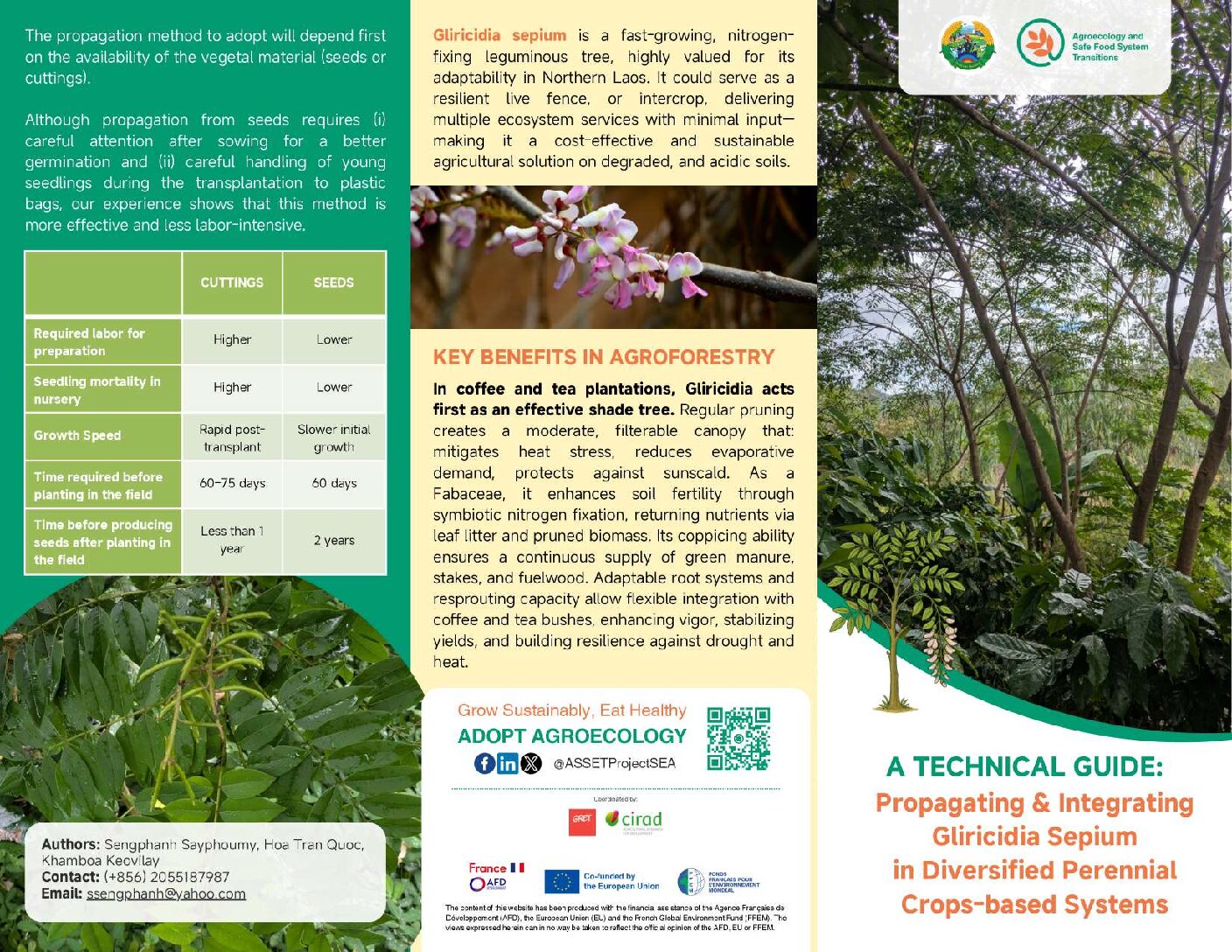
A Technical Guide : Propagating & Integrating Gliricidia Sepium in Diversified Perennial Crops-based Systems
Gliricidia sepium is a fast-growing, nitrogenfixing leguminous tree, highly valued for its adaptability in Northern Laos. It could serve as a resilient live fence, or intercrop, delivering multiple ecosystem services with minimal inputmaking it a cost-effective and sustainable agricultural solution on degraded, and acidic soils.
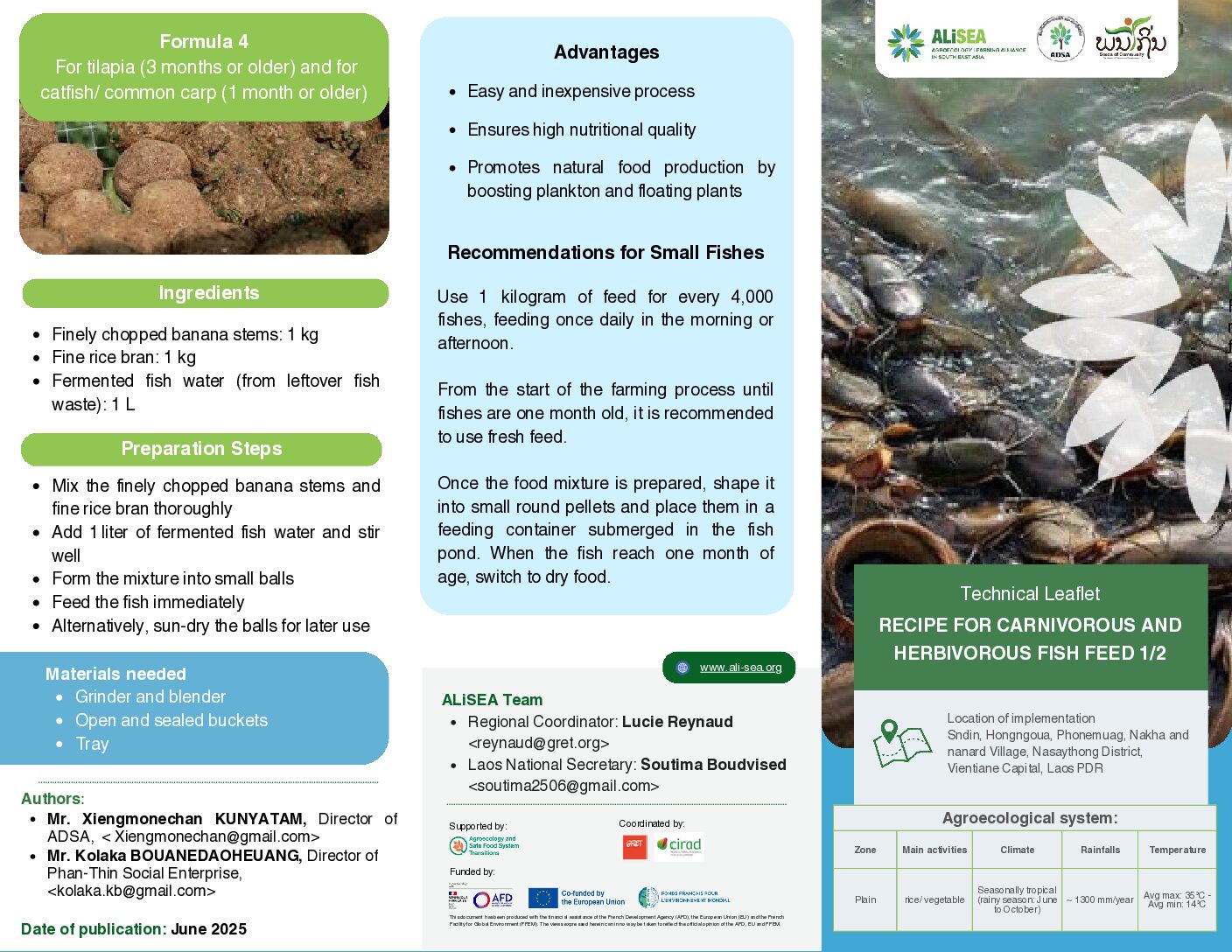
Recipe for Carnivorous / Herbivorous Fish Feed
As we are well aware, the cost of fish feed in current fish farming is relatively high, while the selling price of fish is often low. This has led many farmers to produce their own fish feed using locally available raw materials. Not only is this process not complicated, but it also ensures high nutritional quality.








